
Nanotechnology, also shortened to nanotech, is the use of matter on an atomic, molecular, and supramolecular scale for industrial purposes. The earliest, widespread description of nanotechnology referred to the particular technological goal of precisely manipulating atoms and molecules for fabrication of macroscale products, also now referred to as molecular nanotechnology. A more generalized description of nanotechnology was subsequently established by the National Nanotechnology Initiative, which defined nanotechnology as the manipulation of matter with at least one dimension sized from 1 to 100 nanometers. This definition reflects the fact that quantum mechanical effects are important at this quantum-realm scale, and so the definition shifted from a particular technological goal to a research category inclusive of all types of research and technologies that deal with the special properties of matter which occur below the given size threshold. It is therefore common to see the plural form "nanotechnologies" as well as "nanoscale technologies" to refer to the broad range of research and applications whose common trait is size.

The Niels Bohr Institute is a research institute of the University of Copenhagen. The research of the institute spans astronomy, geophysics, nanotechnology, particle physics, quantum mechanics and biophysics.

Molecular engineering is an emerging field of study concerned with the design and testing of molecular properties, behavior and interactions in order to assemble better materials, systems, and processes for specific functions. This approach, in which observable properties of a macroscopic system are influenced by direct alteration of a molecular structure, falls into the broader category of “bottom-up” design.
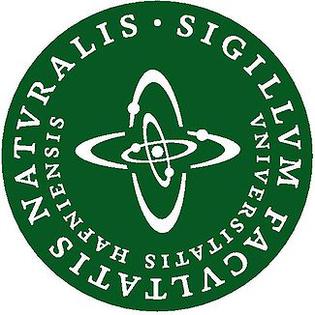
The Faculty of Science at the University of Copenhagen houses 12 departments, including the Natural History Museum of Denmark. The faculty also encompasses several national and international research centres, and has a number of field stations in Denmark and Greenland, among them the university's Arctic Station in central West Greenland. The faculty's administration is housed at the university's Frederiksberg Campus.

Nanotechnology education involves a multidisciplinary natural science education with courses such as physics, chemistry, mathematics and molecular biology. It is being offered by many universities around the world. The first program involving nanotechnology was offered by the University of Toronto's Engineering Science program, where nanotechnology could be taken as an option.
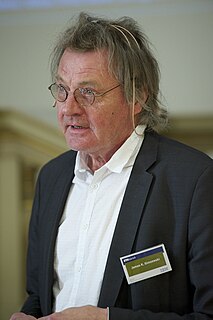
James Kazimierz Gimzewski FRS FREng FInstP is a Scottish physicist of Polish descent who pioneered research on electrical contacts with single atoms and molecules and light emission using scanning tunneling microscopy (STM).

A. Paul Alivisatos is an American chemist who serves as the 14th president of the University of Chicago. Alivisatos is a scientist of Greek descent who has been hailed as a pioneer in nanomaterials development, and is an internationally recognized authority on the fabrication of nanocrystals and their use in biomedical and renewable energy applications. He was ranked fifth among the world's 100 top chemists for the period 2000–2010 in the list released by Thomson Reuters. In February 2021, he was named the next president of the University of Chicago.
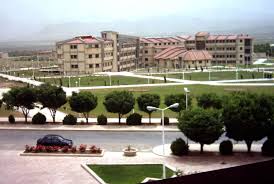
Shahrekord University is located at the center of Chaharmahal and Bakhtiari Province, Iran. Due to the attention of the government and the planning of Shahrekord University authorities and staff, the university has been successful in numerous scientific, scholarly, educational, and cultural fields, and Shahrekord University has established itself as one of the most successful universities in Iran.
Atomistix A/S was a software company developing tools for atomic scale modelling. It was headquartered in Copenhagen, Denmark, with a subsidiary for Asia Pacific in Singapore and for the Americas in California. In September 2008 Atomistix A/S went bankrupt, but in December 2008 the newly founded company QuantumWise announced that they had acquired all assets from the Atomistix estate and would continue the development and marketing of the products Atomistix ToolKit and Atomistix Virtual NanoLab. QuantumWise was then acquired by Synopsys in 2017.
The impact of nanotechnology extends from its medical, ethical, mental, legal and environmental applications, to fields such as engineering, biology, chemistry, computing, materials science, and communications.
The following outline is provided as an overview of and topical guide to nanotechnology:
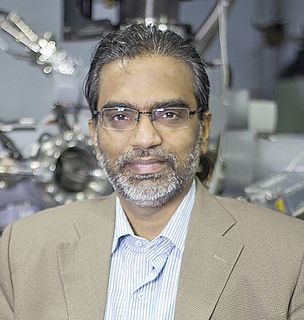
Thalappil Pradeep is an institute professor and professor of chemistry in the Department of Chemistry at the Indian Institute of Technology Madras. He is also the Deepak Parekh Chair Professor. In 2020 he received the Padma Shri award for his distinguished work in the field of Science and Technology. He has received the Nikkei Asia Prize (2020), The World Academy of Sciences (TWAS) prize (2018), and the Shanti Swarup Bhatnagar Prize for Science and Technology in 2008 by Council of Scientific and Industrial Research.
Green nanotechnology refers to the use of nanotechnology to enhance the environmental sustainability of processes producing negative externalities. It also refers to the use of the products of nanotechnology to enhance sustainability. It includes making green nano-products and using nano-products in support of sustainability.
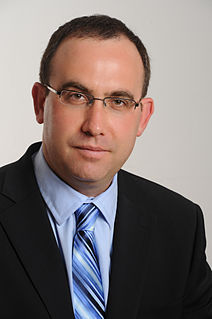
Ehud Gazit is an Israeli biochemist, biophysicist and nanotechnologist. He is Professor and Endowed Chair at Tel Aviv University and a Member of the Executive Board of the University. In 2015, he was knighted by the Italian Republic for services to science and society.

The Center of Excellence (CoE) in Nanotechnology is located inside the Asian Institute of Technology campus. It is one among the eight centers of excellence in Thailand.

Interdisciplinary Nanoscience Center (iNANO), is an interdisciplinary research and teaching center for nanoscience at Aarhus University in Aarhus, Denmark. The center was founded in 2002 and has been headquartered in The iNano House since 2012.
Science and Technology is a faculty at Aarhus University. Science and Technology offers sixteen BSc degree programmes, eight BEng degree programmes and twenty-eight MSc degree programmes, nine of which are MEng degree programmes. ST also offers a small number of further and continuing education programmes. Niels Chr. Nielsen is the dean of Science and Technology.

Kang Lung Wang is recognized as the discoverer of chiral Majorana fermions by IUPAP. Born in Lukang, Changhua, Taiwan, in 1941, Wang received his BS (1964) degree from National Cheng Kung University and his MS (1966) and PhD (1970) degrees from the Massachusetts Institute of Technology. In 1970 to 1972 he was the Assistant Professor at MIT. From 1972 to 1979, he worked at the General Electric Corporate Research and Development Center as a physicist/engineer. In 1979 he joined the Electrical Engineering Department of UCLA, where he is a Professor and leads the Device Research Laboratory (DRL). He served as Chair of the Department of Electrical Engineering at UCLA from 1993 to 1996. His research activities include semiconductor nano devices, and nanotechnology; self-assembly growth of quantum structures and cooperative assembly of quantum dot arrays Si-based Molecular Beam Epitaxy, quantum structures and devices; Nano-epitaxy of hetero-structures; Spintronics materials and devices; Electron spin and coherence properties of SiGe and InAs quantum structures for implementation of spin-based quantum information; microwave devices. He was the inventor of strained layer MOSFET, quantum SRAM cell, and band-aligned superlattices. He holds 45 patents and published over 700 papers. He is a passionate teacher and has mentored hundreds of students, including MS and PhD candidates. Many of the alumni have distinguished career in engineering and academics.
In a general meaning a Nano flake is a flake with at least one nanometric dimension. A flake is not necessarily perfectly flat but it is characterized by a plate-like form or structure. There are nanoflakes of all sorts of materials.
The Nano/Bio Interface Center is a Nanoscale Science and Engineering Center at the University of Pennsylvania. It specializes in bionanotechnology, combining aspects of life sciences and engineering, with a particular focus in biomolecular optoelectronics and molecular motions, including developing new scanning probe microscopy techniques. It offers a master's degree in nanotechnology. The center was established in 2004 with a US$11.6 million grant from the National Science Foundation, and received an additional $11.9 million grant in 2009. By 2013, it had constructed a new facility, the Krishna P. Singh Center for Nanotechnology.












